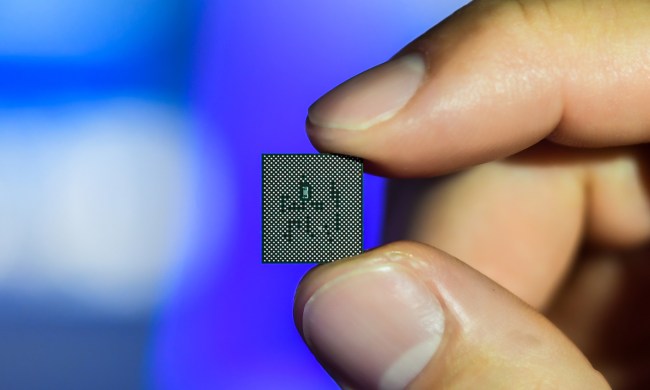
Qualcomm made it no secret that it wants to push its ARM-based Snapdragon processors into dual-screen Always-Connected PCs during our interview with the company prior to the launch of the 8cx chipset, and now we’re getting an idea for how these devices will work. At the Snapdragon Summit in Hawaii, Qualcomm showed a video with a dual-screen PC that’s powered by the Snapdragon 8cx chip, and the internet called the concept a mere mashup of two Surface Go devices, according to a report on MSPowerUser.
Twitter user KevinCocquyt39 identified the resemblance to Microsoft’s Surface Go tablet in his response to Microsoft pundit WalkingCat’s post. “That’s 2 Go’s ‘magnetized’ together (a screen instead of a detachable keyboard)?” he asked.
Each of the tablets in Qualcomm’s dual-screen prototype appears to share the same 3:2 display aspect ratio as Microsoft’s Surface Go. As KevinCocquyt39 pointed out, the two devices appear to slot into a folio cover, with a tablet occupying each side of the folio that could open and close like a hardcover book.
In response to the tweet, Thurrott reporter Brad Sams suggested that the new pin layout used to connect the Surface Go to its keyboard cover was designed for an unspecified function: “FYI: Older Surface covers will not work with the GO,” Sams tweeted. “New pin configuration for some super sekret [sic] things later.”
Prior to the Surface Go’s launch, it was rumored that Microsoft had considered Qualcomm’s chipset for use in its low-cost tablet. However, for reasons unknown, Microsoft ultimately went with long-time partner Intel for the Surface Go’s GPU when it debuted the device. It’s unclear if the device shown in the video at Qualcomm’s Snapdragon Summit is an early prototype that is part of the company’s early work with Microsoft, or if Qualcomm is working on a new dual-screen device with Microsoft or other Always-Connected PC manufacturers.
Qualcomm senior director of product management Miguel Nunes only noted that the Snapdragon chipset was a more ideal solution for dual-screens compared to Intel solutions on the market because of power consumption. “Technically, if you look at the screen, it’s the number one consumer of power on a system,” he explained. “In an Intel solution, they already don’t have great power with one screen. When you have two screens, it’s not going to be great. That’s why those products won’t ever come to the market because power consumption-wise, it’s going to be dreadful.”
If Qualcomm adopts a two-device solution that can function independently and is connected with a bridge, then having two processors, could negate any battery benefits. Until now, most of the dual-screen concepts and leaks we’ve seen are for a device with a single processor that can power two displays.
This isn’t the first time that we’ve heard ARM-based processors used on dual-screen computing devices. In addition to Samsung’s and Huawei’s efforts to bring dual-screen phones to the market, in the past, it was reported that Dell was working on its own version of a dual-screen PC that was internally referred to as Januss.


